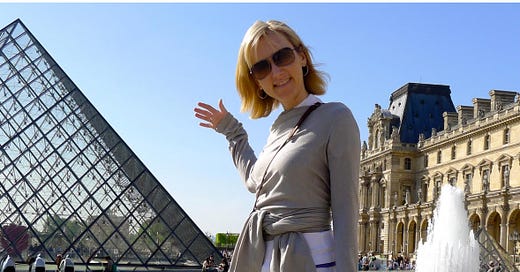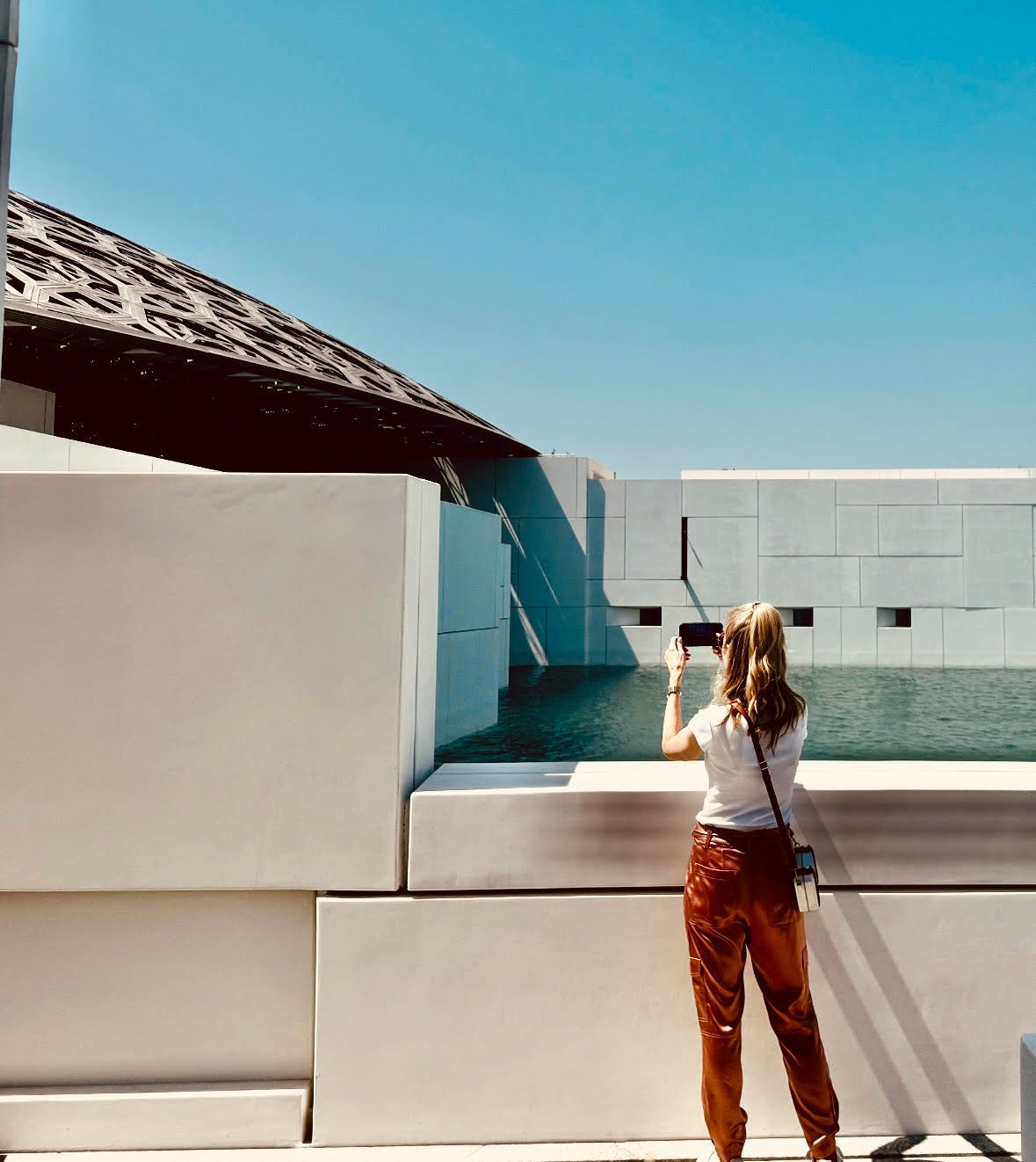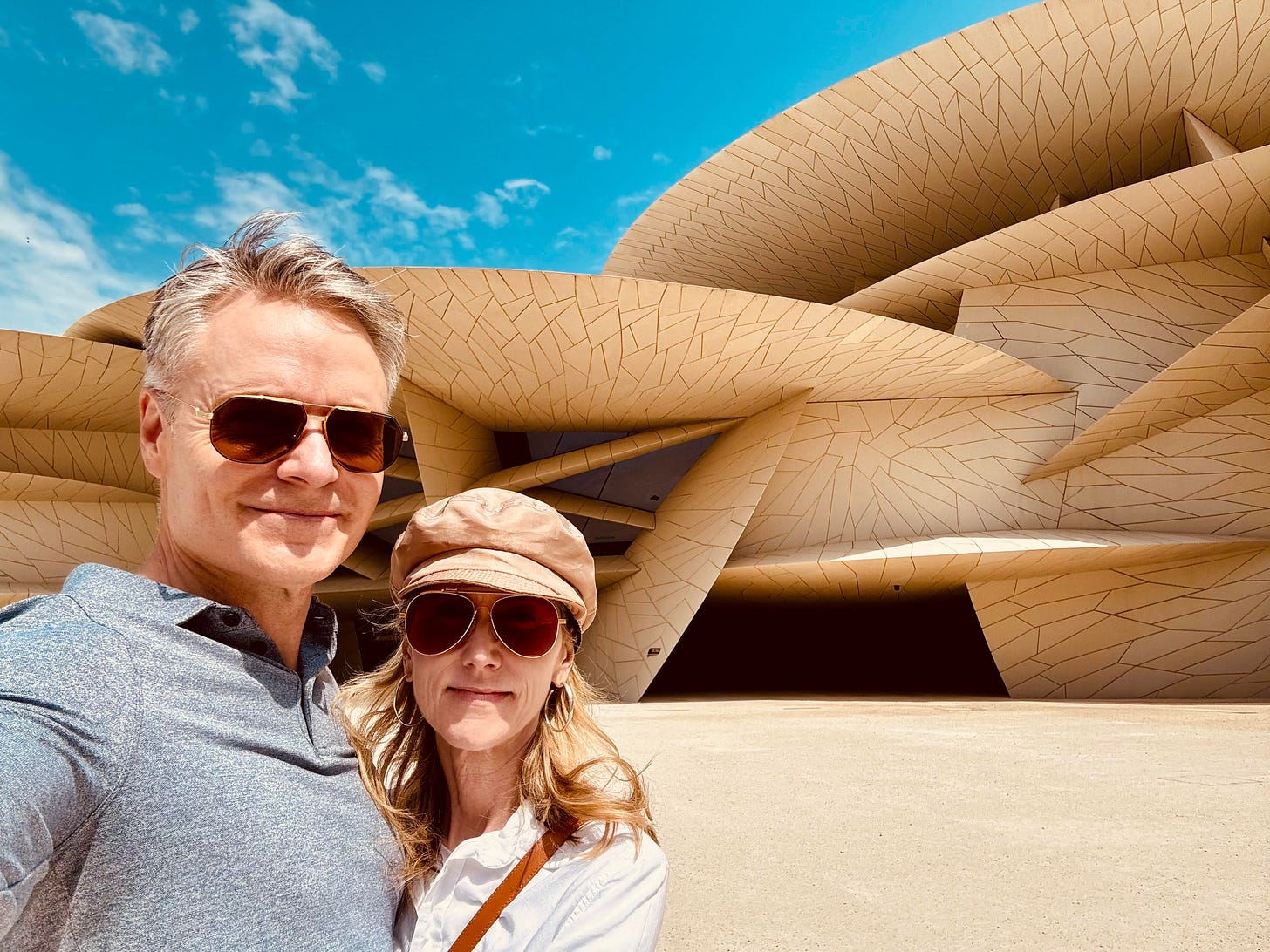Architecting a Culture of Connection: Leadership Lessons from the Louvre Abu Dhabi
#23 || How Art, Architecture, and Leadership Converge
Building Bridges Across Cultural Divides
In an era where workplace leaders struggle to unite distributed teams and bridge cultural divides, we need fresh models for developing connection. I found an unexpected source of inspiration in the newest outpost of the world's most famous museum: the Louvre Abu Dhabi. While the iconic Louvre in Paris first captured my imagination in 2011, the newer "Louvre of the Desert" in Abu Dhabi, United Arab Emirates, offered surprising insights into modern leadership. Rather than simply replicating its Parisian predecessor, this ambitious project reveals how thoughtful design can transcend cultural boundaries and create universal human experiences.
In 2007, Abu Dhabi invested €400 million (approximately US$525 million) for the Louvre's name rights. This wasn't just about branding—it was about creating a new model of cultural partnership. Just as today's organizations seek to break down silos between departments and regions, this France-UAE collaboration demonstrated how institutional boundaries can dissolve in service of a greater mission. The result is more than a museum—it's a living laboratory for universal design principles.
This partnership, along with the Louvre Abu Dhabi’s visitor experience, offers a powerful model for modern leadership. In an age of endless content and constant connection, our real work is designing intentional human experiences that unite rather than fragment our organizations.
The Art of Intentional Curation
Today's leaders face a paradox: despite unprecedented tools for connection, teams feel more fragmented than ever. The solution lies not in more tools, but in curation—from the Latin curare, "to take care." While AI and digital tools have accelerated content creation, they've made thoughtful personalization and contextualization more crucial than ever. Just as museum curators choose which pieces to display and how to arrange them, modern leaders must become skilled curators of information, experiences, and connections.
In this role, leaders can't simply amass content—they must thoughtfully select and contextualize it to reveal meaningful patterns and spark unexpected insights. This is especially vital in hybrid workplaces, where leaders, with their teams, need to intentionally design every meeting, document, and interaction to strengthen team connections.
Instead of traditional geographic divisions that emphasize differences, the Louvre Abu Dhabi organizes artwork around universal themes, such as writing, death, creativity, and water. This radical reorganization reveals shared human experiences across cultures and centuries, which today's global organizations strive to achieve.
I vividly recall our Swedish guide, Astrid, opening her arms wide in the Louvre Abu Dhabi's first gallery to exemplify this. She showed us objects from China, Libya, and France in the first exhibit, placed thoughtfully side by side beneath the same glass. The dating convention, "BCE" (Before the Common Era) instead of "BC," reinforced the museum's universal and inclusive approach. Different countries, distinct expressions—connected through a shared narrative.
For workplace leaders, this approach suggests a powerful shift: instead of organizing teams by function or geography, what if we oriented more around shared challenges or strategies? Instead of emphasizing organizational divisions and different team mission statements, how might we highlight the common values, behaviors, and skills that unite our diverse learning organizations?
Designing Spaces for Contextual Connection
Just as content needs curation, collaboration needs thoughtful design, whether virtual or physical. Jean Nouvel, the architect of the Louvre Abu Dhabi, understood that great spaces are more than containers—they are catalysts for human experience. His insight that "great museums are neighborhoods... spaces that aim to awaken the artistic emotions in the visitor" offers a blueprint for workplace interaction. Like well-designed museum spaces, effective collaboration requires careful orchestration: clear agendas that build momentum, skilled facilitation that draws out diverse perspectives, and intentional practices that ensure every voice contributes to the shared narrative.
Like well-designed museum spaces, effective collaboration requires careful orchestration
Instead of imposing a single structure, Nouvel drew inspiration from the Arab medina, where diverse elements come together in service of community life. His design gave each of the 55 structures its own character and purpose while ensuring they all contributed to a greater whole, much like modern organizations must balance team autonomy with collective purpose. Rather than standardizing how teams work, leaders can create frameworks that allow for different working styles while maintaining the coherence of shared mission and values. This approach addresses one of today's core leadership challenges: how to nurture distinct team identities while building one unified organizational culture.
Particularly relevant for workplace leaders is Nouvel's attention to transitional spaces. Between galleries, short passages with landscape views offer intentional moments of quietude, allowing visitors space to reflect and reset. These thoughtfully designed "in-between" spaces—whether physical cafes or virtual coffee chats—are equally crucial for processing, connecting, and preparing for what's next.
Leaders must design experiences that honor their organization's legacy while staying open to future possibilities.
Nouvel's philosophy resonates with organizational design: "Context isn't only the site. It's above all a wider historical context - a cultural context." Similarly, leaders must design experiences that honor their organization's legacy while staying open to future possibilities. Every space, physical or digital, should continue the organization's story while making room for new chapters.
Engineering Beauty from Necessity
Perhaps the most powerful leadership lesson emerges from the museum's iconic dome. Nouvel calls it a "parasol creating a rain of light" - a description that captures its dual purpose. The dome's primary function is protecting both visitors and priceless artworks from the harsh desert heat, yet its intricate design transforms this necessity into art itself, casting ever-changing patterns of light that dance across gallery floors and walls.
The dome's design, inspired by traditional Islamic mashrabiya screens, shows how innovation can emerge from heritage. Its double-layered structure not only shields the collection but unifies the museum's fifty-five buildings into a coherent whole while creating an enchanting interplay of light and shadow. For leaders, this represents the delicate balance between protection and innovation - how organizational frameworks can both safeguard core values while inspiring creative transformation.
What Nouvel calls "listening architecture" offers a model for adaptive leadership. The dome responds to environmental conditions, adjusting the quality of light throughout the day. Similarly, modern organizations must create frameworks that are both protective and responsive—structures that “shelter” their people while remaining open to change.
From Blueprint to Reality: Building a Connected Culture
Leaders can apply these ideas through simple but powerful actions:
1) Create "medina moments" by designing regular cross-functional gatherings around shared challenges instead of departmental updates
2) Build "transitional spaces" into your calendar—buffer time between meetings for reflection and informal connection
3) Curate information and experiences around universal, organizational themes and values that unite your organization, rather than focusing on department-specific metrics or goals
4) Design hybrid workplace practices that, like the dome, balance protection (clear boundaries, predictable schedules) with openness (flexible arrangements, spontaneous collaboration)
5) Look for opportunities to evolve practical necessities into moments of inspiration, whether that's turning a routine all-hands into a storytelling event or reimagining office space as a gallery of team achievements
Despite our sophisticated collaboration tools and organizational structures, we often find ourselves separated by silos of expertise, geography, and function. Yet what we truly crave—and what drives innovation—are experiences and conversations that connect us.
When we design with the intention to connect, we create environments where trust builds naturally, cross-functional understanding deepens, and differences become opportunities for innovation that no single team could achieve alone.
One more video, thanks to my travel and life partner, just because…









